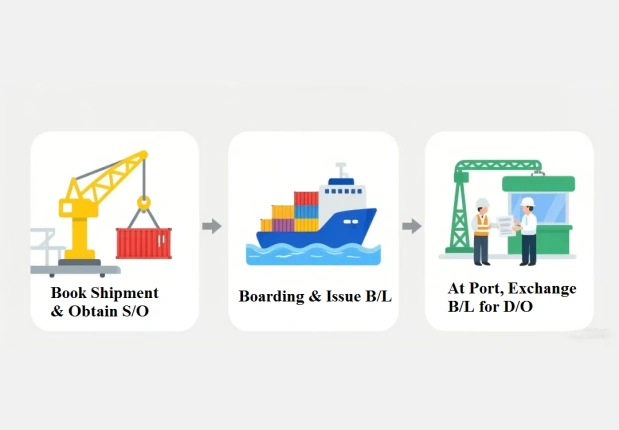Shipping goods internationally can seem complicated, but it all comes down to three key documents: S/O, B/L, and D/O. Each plays a specific role in getting your cargo from origin to destination smoothly and safely.
1. S/O – Your Booking Confirmation
The Shipping Order (S/O) is your first step. Think of it as a reservation for your cargo space on the ship. Once your booking is confirmed, the S/O gives you the green light to:
- Pick up your container
- Prepare your goods for loading
- Organize other shipping documents
2. B/L – Proof of Goods & Ownership
The Bill of Lading (B/L) is the most important document in sea freight. It works like a triple-purpose tool:
* Proof of Ownership: Whoever holds the B/L owns the goods.
* Contract Evidence: Confirms the agreement between shipper and carrier.
* Receipt of Goods: Shows the carrier has received your cargo for transport.
The B/L contains all details about the shipment: cargo type, quantity, weight, origin and destination ports, and shipping terms. It’s the legal backbone of your shipment.

3. D/O – Collect Your Cargo
The Delivery Order (D/O) is your ticket to pick up goods at the destination port. After your cargo arrives, you exchange your B/L for the D/O, complete customs clearance, pay any charges, and collect your shipment.
How They Work Together
Here’s the journey in simple steps:
1. Booking Stage: Get your S/O → arrange container pickup and loading.
2. Shipping Stage: Cargo loaded → B/L issued to confirm ownership.
3. Delivery Stage: At destination → exchange B/L for D/O → clear customs → collect cargo.
These three documents make sea freight smooth, legal, and reliable, guiding your shipment from start to finish.
Tip: Understanding S/O, B/L, and D/O helps you plan shipments better, avoid delays, and ensure your cargo reaches its destination safely.

 Good
Good
 Sep 08 2025
Sep 08 2025


 Home
Home





 Email:
Email:
 Address: 216, Building A1, Fuhai Industrial Zone, Fuyong Community, Fuyong Street, Baoan District, Shenzhen, China
Address: 216, Building A1, Fuhai Industrial Zone, Fuyong Community, Fuyong Street, Baoan District, Shenzhen, China



